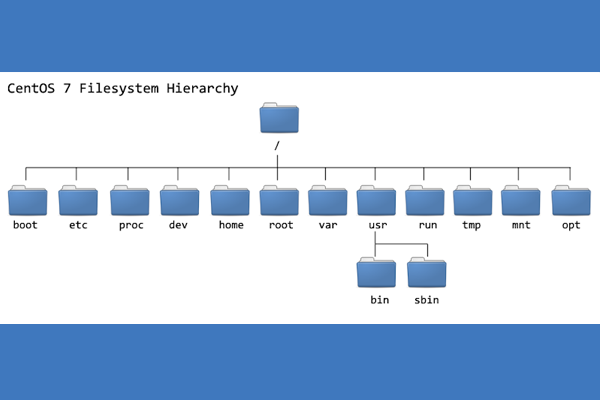
The Filesystem Hierarchy Standard (FHS) defines the directory structure and directory contents in Linux distributions.
In the FHS, all files and directories appear under the root directory /, even if they are stored on different physical or virtual devices. In this post following directory structure is from CentOS Linux Distribution.
Directory Structure is as below with its description;
/ = Root of File System
/bin = Essential Binaries [Commands]
/boot = Static Boot Loader File
/dev = Devices & Special Files
/etc = System Configuration Files
/root = Root User’s Home Directory
/home = Local users Home Directory
/opt = Optional addon Applications
/proc = System & Process Files
/sbin = System Binaries [ Root Users Command files ]
/usr = Usable & Shareable Data
/var = Variable Files or Dynamic Files
/tmp = Temporary Files or Cache Files
/run = Running media files
/mnt = Temporary mount files
Most Linux distributions follow the Filesystem Hierarchy Standard and declare it their own policy to maintain FHS compliance. And also there are some distributions generally follow the standard but different from it in some areas.


